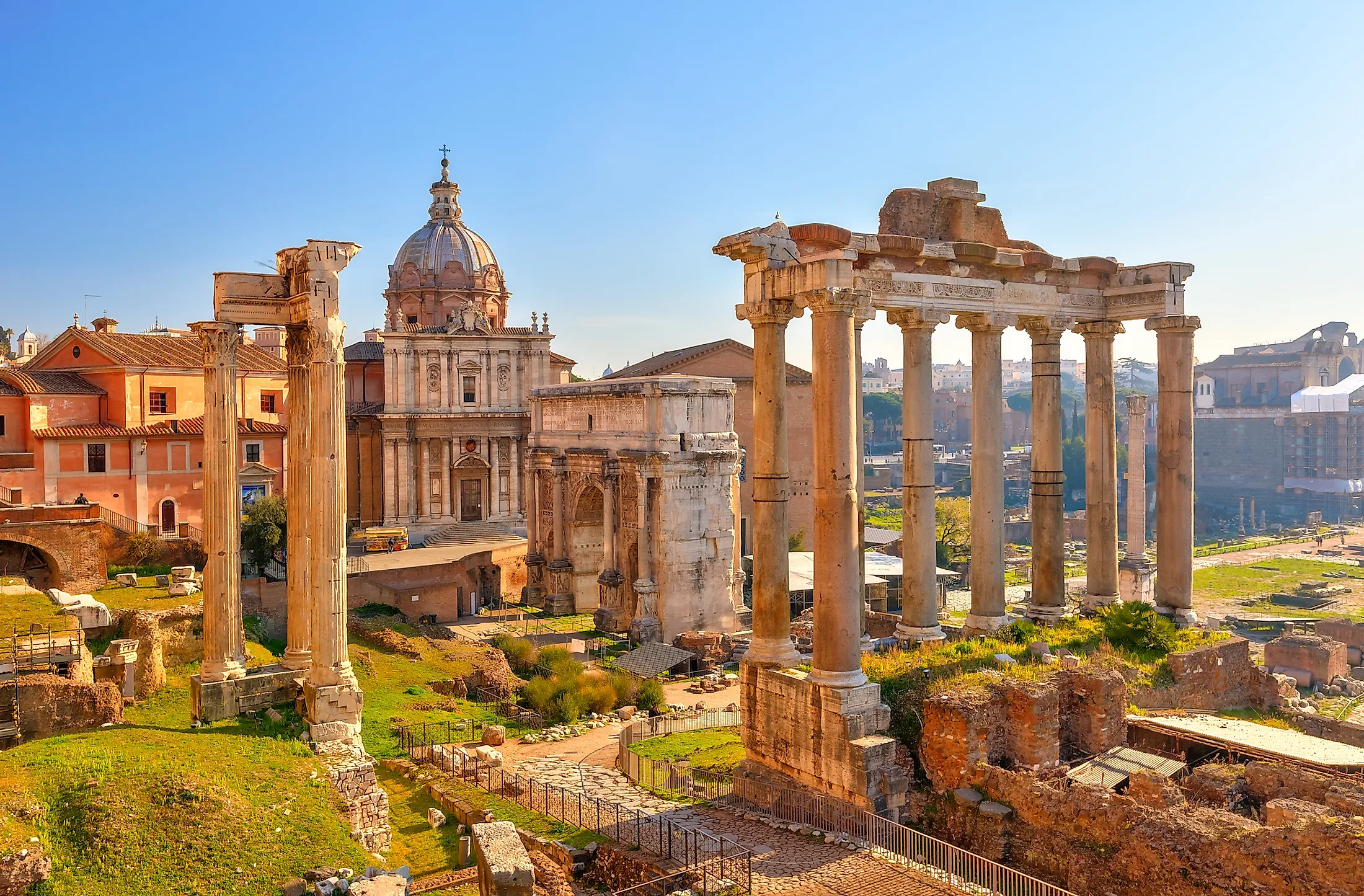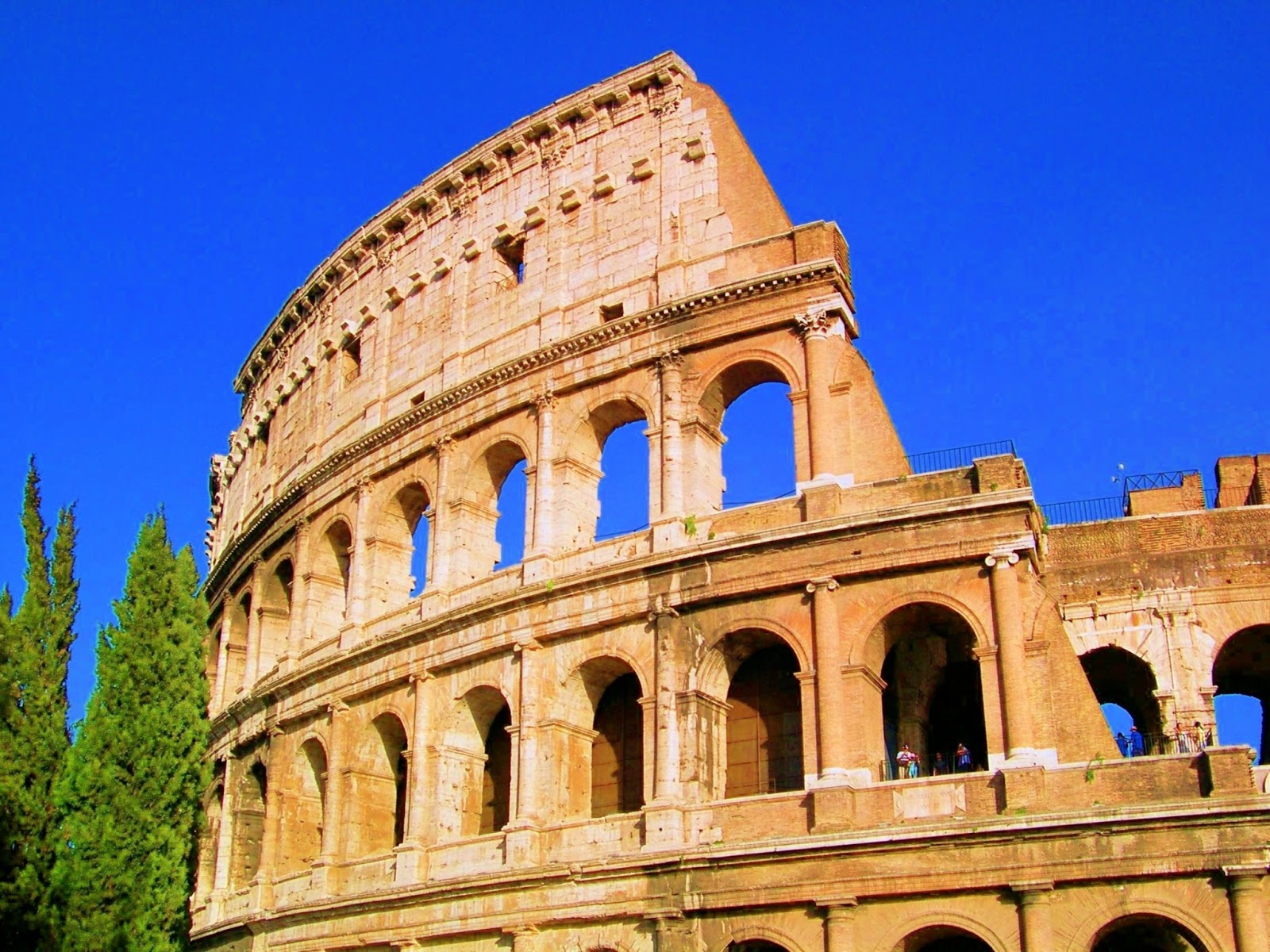Unveiling The Architectural Marvel Of Rome: The Colosseum And The Roman Forum
Editor's Notes: "Unveiling The Architectural Marvel Of Rome: The Colosseum And The Roman Forum" have published today date.
In this day and age where most of us are always on the go, we often forget to take a moment to appreciate the beauty of our surroundings. We rush from one place to another without really seeing what's around us. That's why we've decided to take a closer look at one of the most iconic landmarks in Rome: The Colosseum. This awe-inspiring structure is a testament to the architectural prowess of the ancient Romans. We'll explore its history, its design, and its importance to Roman culture. So sit back, relax, and let's take a journey back in time to the days of gladiators and emperors.

The 9 Most Important Cities Of The Roman Empire - WorldAtlas - Source www.worldatlas.com
Key Differences
| Colosseum | Roman Forum | |
|---|---|---|
| Purpose | Gladiatorial contests and public spectacles | Political, religious, and commercial center of ancient Rome |
| Construction | Built between 70-80 AD | Developed over several centuries from the 7th century BC to the 4th century AD |
| Size | 188 meters long, 156 meters wide, and 48 meters high | Approximately 200 meters wide and 500 meters long |
| Current Use | Tourist attraction and UNESCO World Heritage Site | Archaeological park and UNESCO World Heritage Site |
The Colosseum
FAQ
Address common inquiries and misconceptions regarding the Colosseum and Roman Forum, two of Rome's most iconic architectural marvels.

Mローマ・バレー - M. Roma Volley - JapaneseClass.jp - Source japaneseclass.jp
Question 1: What is the Colosseum primarily known for?
The Colosseum, also known as the Flavian Amphitheatre, was renowned for hosting gladiatorial contests and other public spectacles during the Roman Empire.
Question 2: What materials were used in the construction of the Colosseum?
The Colosseum was mainly constructed using concrete and stone, with its exterior adorned with travertine limestone.
Question 3: What is the difference between the Colosseum and the Roman Forum?
While the Colosseum served as an entertainment venue, the Roman Forum was the political and commercial heart of ancient Rome, hosting government buildings, temples, and markets.
Question 4: Are guided tours available for the Colosseum and Roman Forum?
Yes, guided tours are highly recommended to enhance your understanding of these historical sites and provide insights into their significance.
Question 5: What is the best time to visit the Colosseum and Roman Forum?
To avoid crowds and enjoy a more intimate experience, it is advisable to visit early in the morning or late afternoon.
Question 6: How can I purchase tickets for the Colosseum and Roman Forum?
Tickets can be purchased online or at the ticket office located near the entrance. Advance booking is recommended, especially during peak season.
Delving into these frequently asked questions offers a deeper understanding of the Colosseum and Roman Forum, allowing you to fully appreciate the grandeur and legacy of these architectural wonders.
Proceed to the next article section for further exploration of the historical significance and cultural impact of these iconic Roman landmarks.
Tips for Exploring the Colosseum and Roman Forum
Discover the architectural wonders of ancient Rome with these essential tips for visiting the Colosseum and Roman Forum. Unveiling The Architectural Marvel Of Rome: The Colosseum And The Roman Forum Prepare for a memorable and awe-inspiring experience with recommendations for avoiding crowds, exploring hidden gems, and capturing the essence of these iconic landmarks.

Kaisertum Rome - Source fity.club
Tip 1: Purchase a Combined Ticket:
Save time and money by purchasing a combined ticket that grants access to both the Colosseum and Roman Forum. Utilize the skip-the-line option to avoid lengthy queues, especially during peak tourist season.
Tip 2: Arrive Early:
Beat the crowds by arriving at the Colosseum as early as possible. Morning tours offer a more tranquil experience and allow ample time to explore the amphitheater's vast interior.
Tip 3: Explore the Underground Chambers:
Don't miss the subterranean chambers beneath the Colosseum, once used to house gladiators and animals. These rarely visited areas provide a glimpse into the behind-the-scenes workings of this ancient spectacle.
Tip 4: Wander the Roman Forum:
Delve into the heart of ancient Rome by exploring the Roman Forum, where ruins of temples, basilicas, and government buildings evoke the city's political and commercial center.
Tip 5: Visit the Arch of Constantine:
Commemorating Emperor Constantine's triumph over his rival Maxentius, the Arch of Constantine stands as a testament to ancient Roman military prowess and artistic skill.
Tip 6: Take Guided Tours:
Enhance your understanding of the Colosseum and Roman Forum by joining a guided tour. Led by knowledgeable experts, these tours provide historical context and anecdotes that bring the sites to life.
Tip 7: Capture Stunning Photography:
Capture the grandeur of the Colosseum and Roman Forum through photography. Seek out iconic angles, experiment with natural lighting, and take advantage of the early morning or late afternoon for optimal illumination.
Tip 8: Respect the Sites:
Preserve these historic treasures for future generations by adhering to guidelines. Refrain from touching or climbing on ruins, and dispose of litter responsibly. Respect the sanctity of these ancient landmarks.
Immerse yourself in the grandeur of Rome's architectural wonders by following these tips. Explore the depths of the Colosseum, wander amidst the remnants of the Roman Forum, and capture the essence of ancient Rome through photography. Respect the historical significance of these sites and contribute to their preservation. Your visit to the Colosseum and Roman Forum will be a truly unforgettable experience.
Unveiling The Architectural Marvel Of Rome: The Colosseum And The Roman Forum
The Colosseum and the Roman Forum stand as testaments to the architectural prowess and historical significance of ancient Rome. Unveiling their architectural marvels involves exploring their grandeur, functionality, engineering, preservation, and symbolism.
- Monumental Grandeur: These structures exhibit colossal scale and awe-inspiring presence, reflecting Rome's imperial power.
- Functional Ingenuity: The Colosseum's design ensured efficient crowd management and thrilling gladiatorial contests, while the Forum served as the city's political and commercial hub.
- Engineering Marvel: Advanced techniques like concrete, arches, and domes showcased the Romans' architectural ingenuity and structural prowess.
- Timeless Preservation: Despite centuries of decay, conservation efforts have preserved these landmarks, allowing us to appreciate their original splendor.
- Symbolic Legacy: The Colosseum evokes the violence and spectacle of Roman entertainment, while the Forum represents the heart of the ancient Roman world.
- Tourist Destination: Today, these architectural marvels draw millions of visitors, fostering a connection to the past and showcasing the enduring legacy of ancient Rome.
The Colosseum and the Roman Forum are not just architectural wonders but also symbols of Rome's grandeur, innovation, and historical importance. Their preservation and accessibility allow us to connect with the past and gain insights into the lives, culture, and achievements of the ancient Romans.

a woman standing on top of a metal fence - Source www.pinterest.com

Ancient and Imperial Rome Colosseum and Forum | Audley Travel UK - Source www.audleytravel.com
Unveiling The Architectural Marvel Of Rome: The Colosseum And The Roman Forum
Delve into the heart of ancient Rome, where the Colosseum and Roman Forum stand as enduring testaments to the architectural ingenuity and cultural significance of the Roman Empire. The Colosseum, an iconic amphitheater, and the Roman Forum, the political and social hub of the city, are intertwined in a fascinating historical narrative that unveils the grandeur and complexity of this era. Their connection exemplifies the interplay between entertainment, power, and the lives of ordinary Romans.

File:Colosseum in Rome, Italy - April 2007.jpg - Wikimedia Commons - Source commons.wikimedia.org
The Colosseum, a colossal structure, was the largest amphitheater ever built, capable of accommodating over 50,000 spectators. Its primary purpose was to provide entertainment through gladiatorial contests, chariot races, and other spectacles. These events not only served as a form of amusement but also played a significant role in maintaining social and political stability. The Colosseum became a symbol of Roman power and engineering prowess, showcasing the empire's ability to construct grand spectacles that captivated the masses.
In contrast, the Roman Forum was the center of Roman public life, where political debates, legal proceedings, and religious ceremonies took place. It was a place where citizens gathered to discuss issues, elect officials, and witness the workings of government. The Forum's architecture, with its temples, basilicas, and triumphal arches, reflected the importance of religion, law, and military victories in Roman society. Its proximity to the Colosseum further emphasized the intertwined nature of entertainment and politics in ancient Rome.
The connection between the Colosseum and Roman Forum extended beyond their physical proximity. Both structures served as symbols of Roman identity and cultural values. The Colosseum represented the Empire's military might and its commitment to entertainment, while the Roman Forum showcased its political and social organization. Together, these monuments provided a comprehensive glimpse into the multifaceted nature of Roman civilization.
| Structure | Purpose | Significance |
|---|---|---|
| Colosseum | Entertainment and spectacle | Symbol of Roman power and engineering prowess |
| Roman Forum | Political and social hub | Reflection of Roman importance of religion, law, and military victories |
Conclusion
The Colosseum and Roman Forum stand as enduring reminders of the architectural brilliance and cultural significance of ancient Rome. Their intertwined connection highlights the interplay between entertainment, power, and everyday life in this remarkable civilization. By unveiling their architectural marvels, we gain a deeper understanding of Roman society and its lasting impact on Western civilization.
As we continue to explore the ruins of ancient Rome, let us marvel at the ingenuity and grandeur of these architectural wonders and reflect on their timeless relevance. They remind us of the importance of public spaces, the pursuit of entertainment, and the enduring power of political and social institutions. By appreciating the connection between these two iconic monuments, we gain a deeper understanding of the complexities of ancient Roman society and its lasting legacy.